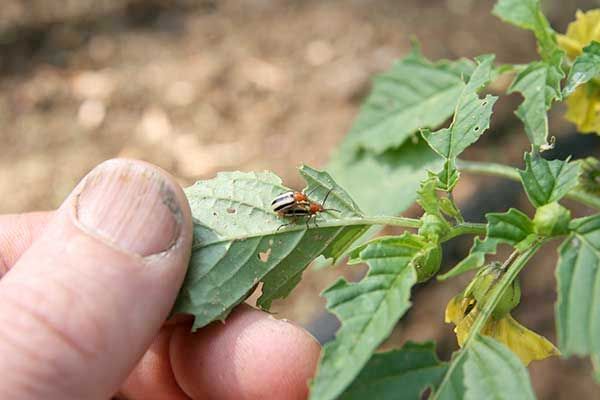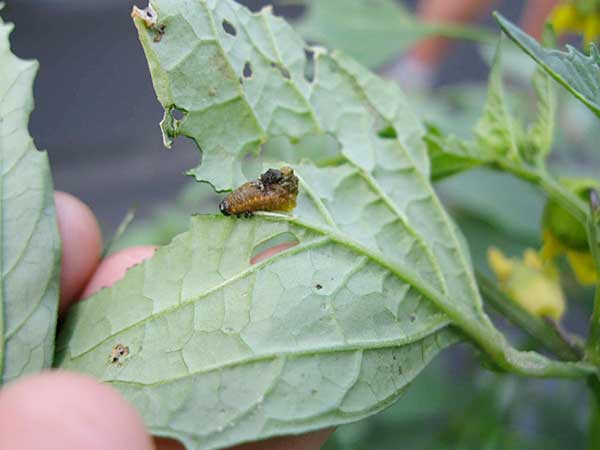
Pests: Three-Lined Potato Beetle (Lema daturaphila)
Pest/disease identification and lifecycle, most common damage symptoms and crops affected:
The favorite foods of the three-lined potato beetle are crop and weed species in the Physalis genus, notably tomatillo and husk cherries. Other solanaceous crops, such as, ashwagandha, eggplant, potato, and tomato are also sometimes attacked.The adult of this pest is about the same size as a cucumber beetle but has a reddish head and a thorax with two dark spots. Its wing covers are dark yellow with three black stripes. The three-lined potato beetle overwinters in the soil in the pupa or adult stage, and emerges in the spring. Females begin laying eggs between early June and early July, which hatch about two weeks after that. The larvae that emerge look a bit like Colorado potato beetle larvae, except these critters have the endearing practice of carrying a small pile of their own excrement on their back. The larval stage is where the most feeding damage occurs. The larvae mature in about two weeks. There are possibly two generations per year.
Management options:
Cultural:
On most crops, the damage from this pest does not warrant control. If three-lined potato beetle has been a problem in the past, floating row covers will help you exclude the overwintering generation from finding your crops and laying eggs, and that should get you by. Hand-picking into soapy water will work on small plantings. Removing solanaceous weeds, particularly species in the Physalis genus, will help to check their population growth by taking away alternative host plants.
Pesticides approved for use in certified organic production (as a last resort):
Pyrethrin (PyGanic) or spinosad (Entrust, or Monterey Garden Insect Spray for home gardeners) may offer some relief.
Please note: This information is for educational purposes. Any reference to commercial products, trade or brand names is for information only, and no endorsement or approval is intended. Pesticide registration status, approval for use in organic production and other aspects of labeling may change after the date of this writing. It is always best practice to check on a pesticide’s registration status with your state’s board of pesticide control, and for certified organic commercial producers to update their certification specialist if they are planning to use a material that is not already listed on their organic system plan. The use of any pesticide material, even those approved for use in organic production, carries risk — be sure to read and follow all label instructions. The label is the law. Pesticides labeled for home garden use are often not allowed for use in commercial production unless stated as such on the label.
Informed by: Eric Sideman


